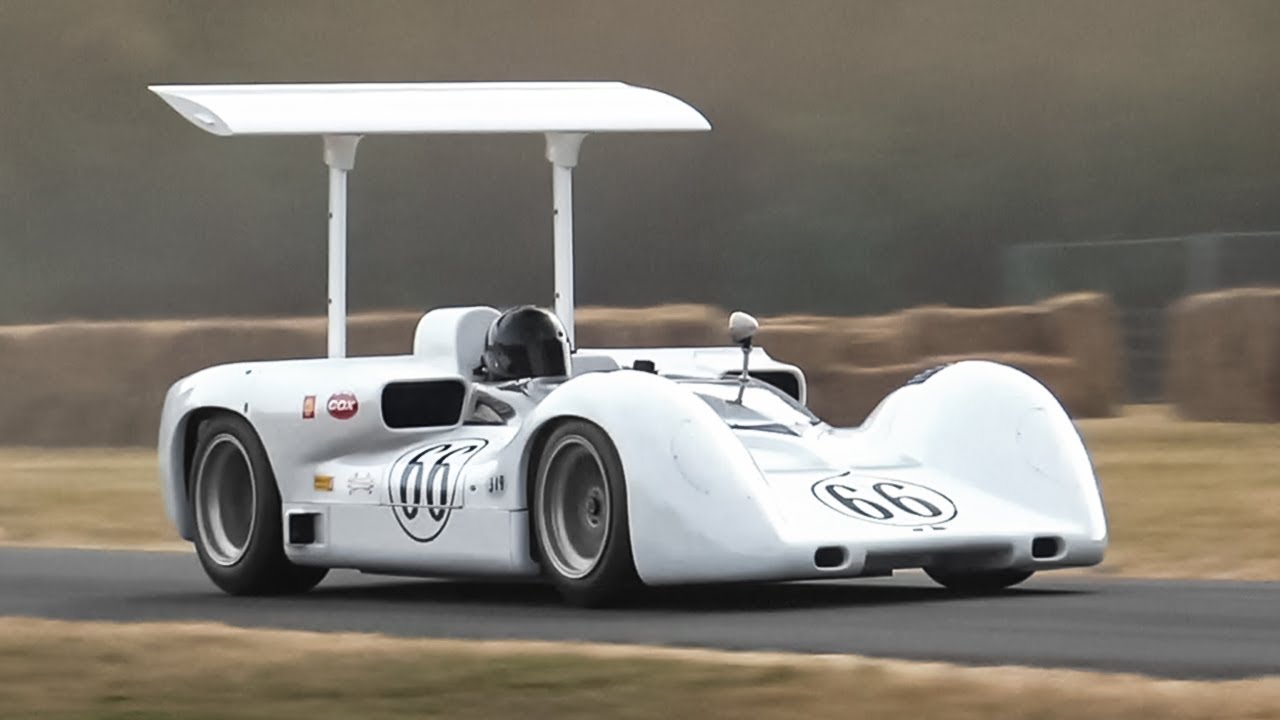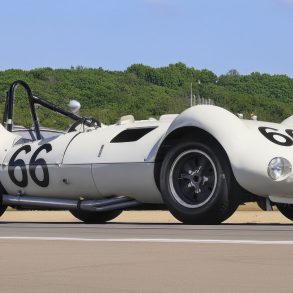Chaparral 2E
In 1966 Chaparral introduced the 2E for the Can-Am series. With its high mounted wing it was the car that changed racing forever. It scored a one-two finish at Laguna Seca with Phil Hill and Jim Hall driving. The 2E was brilliantly conceived. The wing was mounted high to get the cleanest airflow possible and set at a 17-to-18-degree angle to generate 240 pounds of rear downforce at 100 mph. According to Hall, that angle could be flattened to four or five degrees, depending on the racetrack.
The radiators and the oil tank were repositioned at the back of the car to get as much weight as possible over the tail. Hall:
“That was all done probably because we were Texans. We wanted to eliminate heat [by moving the radiator from in front of the driver], and that gave us the freedom to do what we wanted aerodynamically at the front. And we also wanted better traction.”
The air that would have flowed into the radiator at the nose was used as a venturi tunnel to create additional downforce. The only problem with the movable rear wing was that if a driver flattened it on a straightaway, it created a scary imbalance between the amounts of downforce at the front and rear. Hall simply incorporated an aluminum flap that blanked off the front Venturi tunnel when the driver pressed the left pedal. As soon as he hit the brakes at the end of a straightaway, the flap opened and the wing reverted to maximum downforce. The revolutionary aero package and the torque-converter transmission aside, the rest of the 2E was mostly conventional. It had Girling disc brakes and a control-arm front suspension with coil-over shocks and an anti-roll bar.
At the back, the car used two long trailing links per side, a reversed lower control arm, a top lateral link, and an anti-roll bar. The 450-hp, 327-cubic-inch aluminum-block Chevy V-8 had four Weber 48 IDM carburetors.
The 2E might have won the six-race Can-Am series, but the car suffered teething troubles, and the team missed the first round because it was racing its 2D coupe in sports-car events in Europe. Even so, drivers Phil Hill and Jim Hall were fourth and fifth in the point standings with a single win. The Chaparrals were the fastest cars, but their reliability was suspect. The 2E is probably the most famous car Chaparral made, which is why Hall and Musser are producing brand-new ones through their company, Chaparral Cars LLC. “This is a true continuation car,” says Musser. “The body comes out of the original molds. We used the original drawings. And the original people are doing it.” The project began in early 2005.














